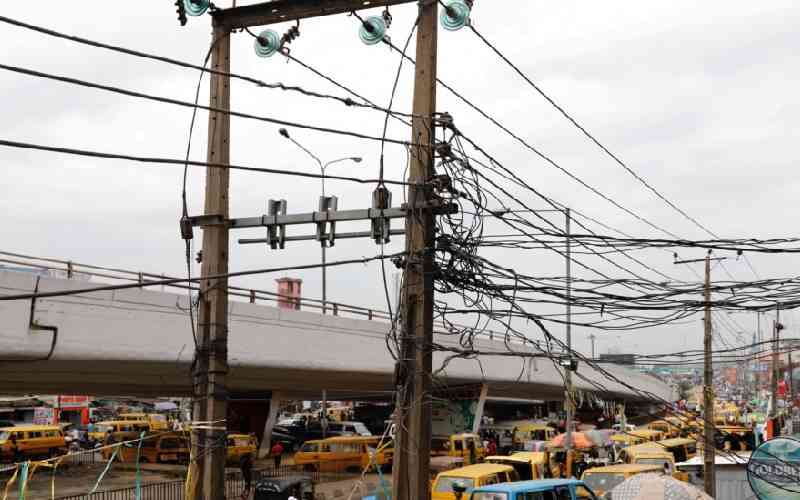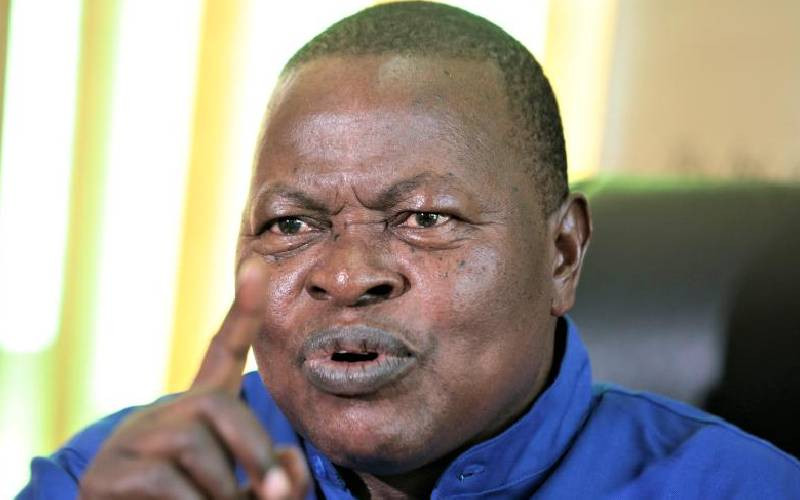NAIROBI: The attention of policy makers, managers and investors so far this year has largely been on how lower oil prices in the international market will impact the Kenyan economy, which spends a huge chunk of its foreign exchange earnings on importing crude.
However, investment banks do not appear overly concerned with the impact of these prices on the economy or Kenya’s infant oil and gas sector.
“Commodity import prices are not a key concern; crude oil prices have fallen more than 25 per cent in year to date. This eases potential concerns of a worsening of the current account deficit from this perspective,” read a recent bulletin from the Standard Investment Bank (SIB).
But though Kenya’s medium-term outlook remains positive, SIB warned growth was not evenly spread.
The World Bank, in its latest economic update on the country, added that falling world crude prices would boost incomes in Kenya and reduce the high cost of living. A rise in incomes would spike consumption levels and increase private investment, particularly in the manufacturing sector that has been limping.
The World Bank projects the gross value of the goods the country will produce this year will grow 6 per cent this year, 6.6 per cent in 2016 and 7 per cent in 2017.
FISCAL DEVOLUTION
“Rapid growth mainly reflects increased aggregate demand emanating from the fall in oil prices and ongoing infrastructural projects. Higher public investment spending on infrastructure, especially the standard gauge railway, will also enhance Kenya’s competitiveness, particularly beginning in 2016, and help boost output in the medium term,” said the institution.
However, challenges remain.
Kenya will need to grapple with issues around fiscal devolution, following the adoption of the 2010 Constitution and the establishment of 47 county governments in 2013.
“So far, the limited capacity of new county governments to spend has curbed the level of fiscal fallout. Nonetheless, this could change meaningfully over the coming years,” said Razia Khan, head of Africa research at Standard Chartered Bank.
However, with Government debt rising following Kenya’s maiden Eurobond issuance of $2 billion (Sh183.5 billion at current exchange rates) last year, and a $750 million (Sh68.8 billion) retap to follow, the Treasury will need to act fast to reduce the deficit.
Further, making room for planned spending on infrastructure will require cuts to recurrent expenditure. This is a particularly pressing problem given the public sector wage bill accounts for 54 per cent of the country’s total revenue.
In its country report, the World Bank warned that although the fall in oil prices reduces the size of the current account deficit, easing pressure on the shilling, the external account problem will remain because export growth is slow.
“However, an improved outlook for the shilling will decrease the likelihood that the central bank will tighten monetary policy, allowing consumer and business confidence to increase.”
Stay informed. Subscribe to our newsletter
With the Central Bank of Kenya actively draining liquidity from the market using open market operations, a gradual depreciation path for the shilling has been seen so far.
PUBLIC DEBT
But the country’s expansionary fiscal position remains worrisome as public debt builds up and trade between the country and the rest of the world gets more uneven.
“The external sector remains vulnerable as import growth continues to outpace export growth, and short-term flows finance the current account deficit. Sluggish external demand for exports and declining production for export is widening the current account deficit. These trends point toward underlying structural weaknesses that need to be addressed,” said Diariétou Gaye, World Bank’s country director for Kenya.
Last month, the International Monetary Fund announced it would be advancing Kenya $700 million (Sh63.7 billion) to cushion the economy against unforeseen external shocks.
The Government requested the package as a precautionary measure in case of an emergency, such as a natural disaster or militant attack.
But there is a rider to this loan agreement. The Government has been asked to ensure its debt levels are kept manageable, and the Treasury must commit funds to improve the road and rail networks, as well as meet inflation targets.
Past fiscal spending has led to growth spurts, but has also increased the fiscal deficit and public debt. This has raised questions on whether the growth Kenya has experienced is organic (and therefore sustainable) or fiscally propelled (and therefore unsustainable).
[email protected]
 The Standard Group Plc is a
multi-media organization with investments in media platforms spanning newspaper
print operations, television, radio broadcasting, digital and online services. The
Standard Group is recognized as a leading multi-media house in Kenya with a key
influence in matters of national and international interest.
The Standard Group Plc is a
multi-media organization with investments in media platforms spanning newspaper
print operations, television, radio broadcasting, digital and online services. The
Standard Group is recognized as a leading multi-media house in Kenya with a key
influence in matters of national and international interest.
 The Standard Group Plc is a
multi-media organization with investments in media platforms spanning newspaper
print operations, television, radio broadcasting, digital and online services. The
Standard Group is recognized as a leading multi-media house in Kenya with a key
influence in matters of national and international interest.
The Standard Group Plc is a
multi-media organization with investments in media platforms spanning newspaper
print operations, television, radio broadcasting, digital and online services. The
Standard Group is recognized as a leading multi-media house in Kenya with a key
influence in matters of national and international interest.








